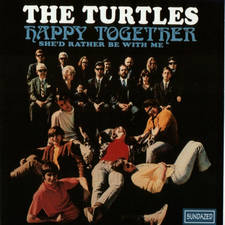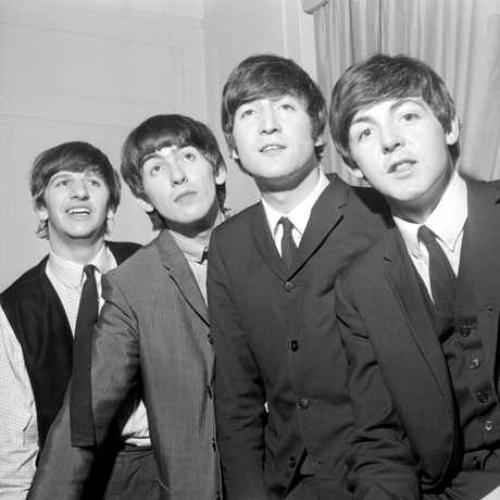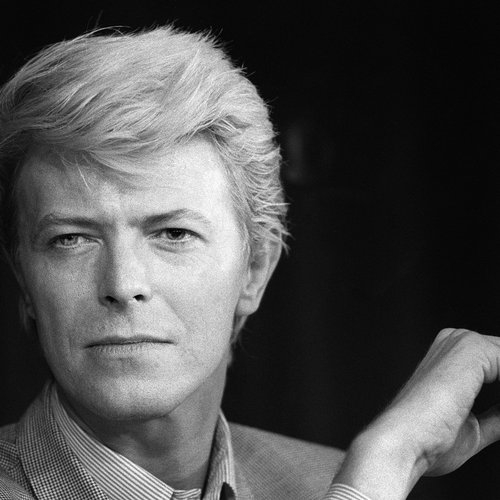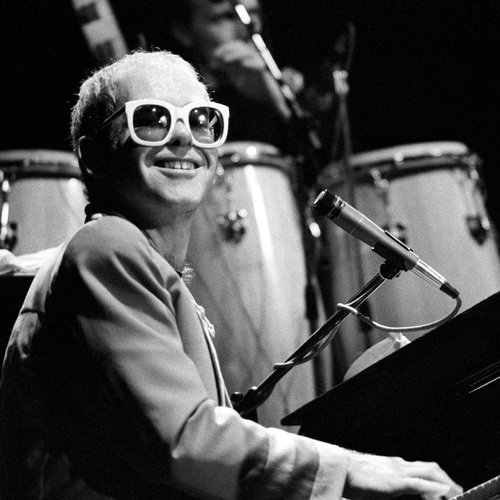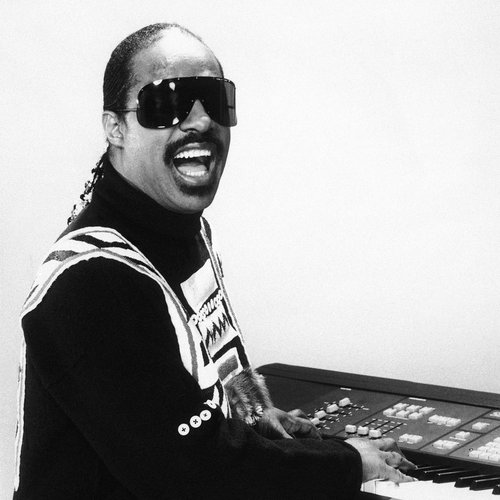Stuart Sutcliffe: The life, work and tragic death of the Fifth Beatle
8 February 2024, 12:47 | Updated: 8 February 2024, 13:26

Backbeat: The original theatrical movie trailer
Without Stuart Sutcliffe, The Beatles may well have never existed.
Listen to this article
There's been endless debate over the years about who, if anyone, deserves the title of The Fifth Beatle, and one name that always arises is Stuart Sutcliffe.
That's because despite his tragic death six months before The Beatles released their debut single 'Love Me Do', Sutcliffe's impact on the band really can't be overstated.
- The Beatles vs The Rolling Stones – in their own words
- "I don't like your tie!": How The Beatles' sliding doors moment became the best thing on the internet
- Listen to the Gold 60s Live Playlist on Global Player, the home of Gold
Stuart Sutcliffe was an actual Beatle not just before Ringo Starr, but before even Pete Best.
A Liverpool-raised Scot who moved to Germany, he played a formative role in the band's earliest years and their crucial early residencies in Hamburg.
He was immortalised in the 1994 film Backbeat, and below we take a closer look at the life, work and tragedy of Stuart Sutcliffe.
Where was Stuart Sutcliffe born and where did he grow up?

Stuart Fergusson Victor Sutcliffe was born on June 23, 1940, in Edinburgh, Scotland.
He was the eldest child of teacher Martha 'Millie' Sutcliffe and senior civil servant Charles Sutcliffe.
The family moved to Liverpool in 1943 when Charles needed to help with the war effort, and after the end of the war, Charles signed up as a ship's engineer.
Stuart was brought up on Aigburth Drive in Liverpool, attending Park View Primary School in Huyton and Prescot Grammar School.
He then went to Liverpool College of Art, while simultaneously working as a binman.
When did Stuart Sutcliffe join The Beatles?

While he was primarily a painter, and a remarkably good one by all accounts, Stu also had something of a musical background.
His mum made him have piano lessons from the age of nine, while he also sang in the local church choir and played bugle in the Air Training Corps. His dad, when he was around, also taught him a few guitar chords.
It was at the Liverpool College of Art where Sutcliffe met a fellow student by the name of John Lennon, and they eventually moved in together in early 1960.
"Stuart was a thin, arty guy with glasses and a little Van Gogh beard, a good painter," said George Harrison, quoted in Anthology.
"John really liked Stuart as an artist. Stuart obviously liked John because he played the guitar and was a big Ted. Stuart was cool. He was great-looking and had a great vibe about him, and was a very friendly bloke."
John took Stuart to the Casbah Coffee Club one evening, and Lennon and Paul McCartney cajoled Stu into buying a Höfner President 500/5 model bass on HP from a local music shop.

Hallelujah I Love Her So (Anthology 1 Version)
In May of that year, Sutcliffe joined Lennon, McCartney, and Harrison, then known as The Silver Beatles or Silver Beetles.
Depending on who you talk to, Stu's playing was somewhere between awful, rudimentary and fine-but-nothing-special.
"He wasn't really a very good musician," George recalled. "In fact, he wasn't a musician at all until we talked him into buying a bass.
"It was a bit ropey, but it didn't matter at that time because he looked so cool. We never had many gigs in Liverpool before we went to Hamburg, anyway."
He even had a regular vocal spot, singing Elvis Presley's 'Love Me Tender', which apparently was appreciated enough by the audience to spark a bit of jealousy with Paul.
When did Stuart Sutcliffe leave The Beatles and did he quit or was he fired?

It's fair to say the Beatlemania era was pretty barmy, but in some ways, the pre-fame Beatles years were even more out there.
At the end of 1960, George Harrison was deported from Germany for being too young to play in its clubs. Meanwhile, Macca and Pete Best were also deported for attempted arson at the Bambi Kino.
That meant John and Stu were stuck by themselves in Hamburg. John sighed and went home himself but, struggling with a cold, Sutcliffe stuck around in Hamburg.
After that though, things happened fast. Stuart did return back to Liverpool in late January 1961, and the whole group returned to Hamburg in March, but by July 1961, Stuart Sutcliffe was no longer a Beatle.

You'll Be Mine (Anthology 1 Version)
Despite the friction between bandmates, it was Stuart himself who decided to quit The Beatles to focus on his first love of painting.
"Stuart was engaged to Astrid and after that trip decided that he was going to leave the band and live in Germany because Eduardo Paolozzi was coming to be the lecturer at Hamburg Art College," George said in Anthology.
"Su had never really been that single-minded about music. We liked him in the band: he looked great and he'd learnt enough to get by, but he was never totally convinced that he was going to be a musician."
Paul agreed: "Someone a few years ago said how it was my relentless ambition that pushed Stu out of the group. We did have some arguments me and St, but I actually just wanted us to be a really cracking band, and Stu – being a cracking artist – held us back a little bit, not too much."
What did Stuart Sutcliffe do after he left The Beatles?

The move back to painting made sense. He earned a postgraduate scholarship and enrolled at the Hochschule für bildende Künste Hamburg (Hamburg College of Art), studying under Eduardo Paolozzi.
"Sutcliffe is very gifted and very intelligent. In the meantime he has become one of my best students," wrote Paolozzi in one of his reports.
Meanwhile, in The Beatles, Paul McCartney moved on to bass, actually borrowing Stu's for a while before he could get his own left-handed model made.
"I got lumbered with bass," Paul remembered. "Nobody actually wanted to play bass, that's why Stuart was playing it. We all wanted really to be guitarists, and we were three guitar players to start off with."
How did Stuart Sutcliffe die and how old was he?

Soon after Stuart Sutcliffe left The Beatles, tragedy struck.
Stuart began to suffer from an acute sensitivity to light and serious headaches too, even going temporarily blind at times when the attacks occurred.
During one art class in February 1962, he collapsed, but doctors were unable to diagnose a cause for his symptoms.
He travelled to the UK for the doctors there to check him out, but he was told that nothing was wrong and returned to Hamburg.
Stu's condition worsened, and a second collapse happened on April 10, 1962. He was taken to hospital in the ambulance, but died of a ruptured aneurysm in the brain on the way.

Stu Sutcliffe: The Last 48 Hours | Beatles Stories
The cause of the cerebral haemorrhage that killed Sutcliffe isn't known, though some have speculated that it was the result of a head injury suffered during an attack outside a show at Lathom Hall in Seaford back in January 1961.
Lennon suffered a broken finger and Sutcliffe a fractured skull in the attack, where he was hit against a brick wall and possibly kicked in the head, but Stuart refused medical attention and didn't keep a later appointment for an X-ray.
For what it's worth, George wasn't sure about that being what caused it. "I do remember him getting beaten up after a gig once in Liverpool just because he wasn't in a band," he said, "but that was a couple of years before".
Whatever the underlying reason, dead aged just 21, Sutcliffe was buried in Huyton Parish Church Cemetery in Merseyside.
How did The Beatles memorialise Stuart Sutcliffe and what is his legacy?

The Beatles were on the cusp of greatness at the time of Stuart's death.
Two months after his passing they signed with George Martin and four months after that they released 'Love Me Do', the debut single that would set them on the path to superstardom.
Stuart was later immortalised as one of the many figures on the sleeve of Sgt Pepper's Lonely Hearts Club Band.
What's more, three previously unreleased songs from the band's very earliest years were included in 1995's Anthology 1: 'Hallelujah, I Love Her So', 'You'll Be Mine', and 'Cayenne'.

Cayenne (Anthology 1 Version)
Stuart's time with the band was also covered extensively in the first episode of the Anthology TV series and in the early part of the Anthology book.
What's more, while Pete Best's image was unceremoniously torn off and replaced by Ringo's on the front of Anthology 1, Stuart's appears on the sleeves of all three compilations.
As we've already said, the 1994 movie Backbeat focused primarily on Stuart's time in The Beatles, where he was played by Stephen Dorff, with Twin Peaks star Sheryl Lee playing Astrid Kircherr.
He's been the subject of a number of books and TV documentaries, while his estate keeps his memory alive, selling artefacts and memorabilia.
